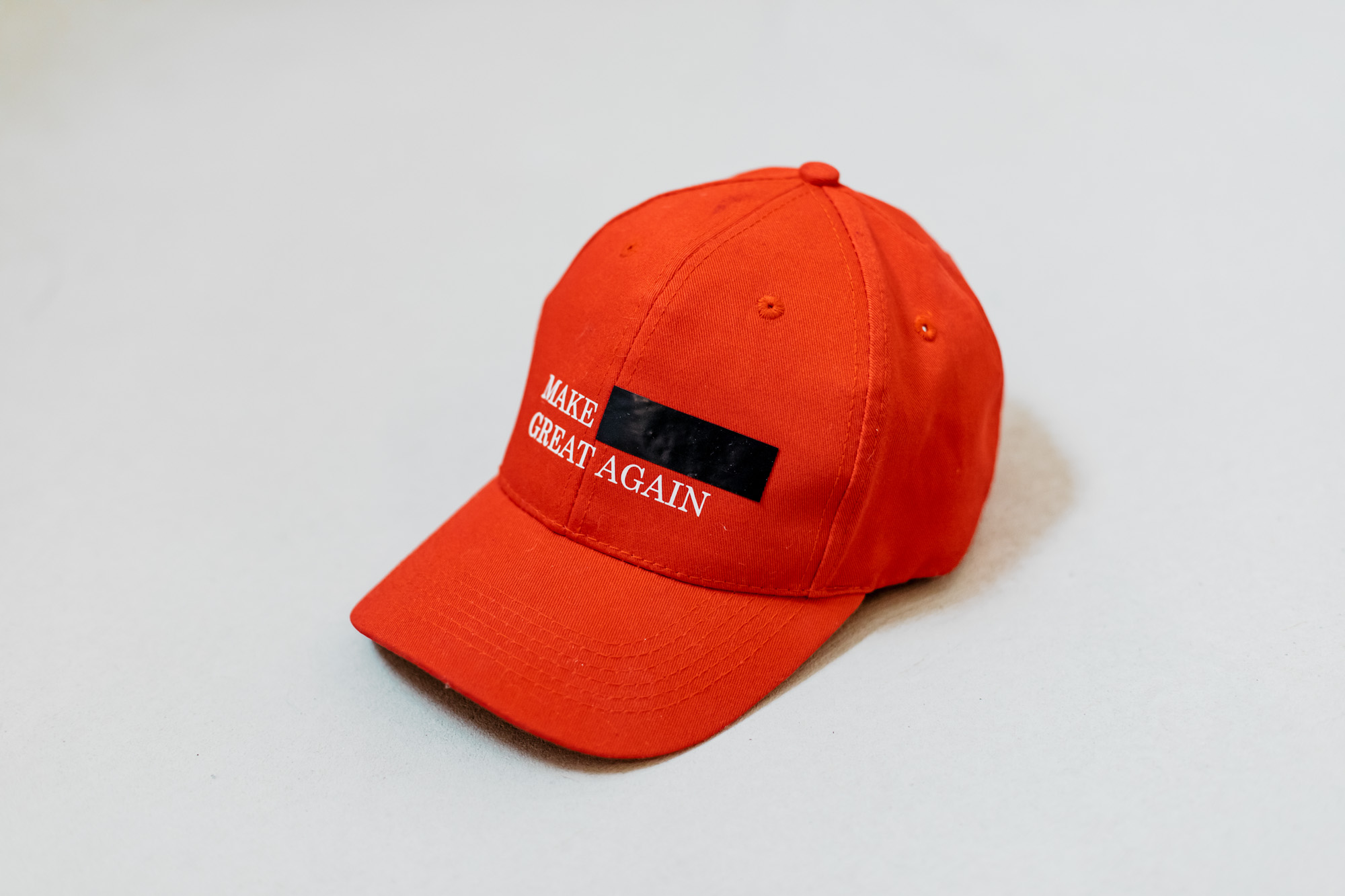Shows
Stephanie Misa: “MAGA Meets Marie”


Televised images of rioters storming the United States Capitol seemed to present a cinematic simulacrum that we’ve come to expect from that quintessentially Hollywood genre, the disaster film. However, the images were real; right-wing political extremism had found a place for its fantasy among the steps and corridors of American power.
In her latest show, “MAGA Meets Marie,” at Vienna’s Gallery Gundula Gruber, Filipino-born artist Stephanie Misa summoned the visual language of the Capitol riots, with a historical nod to the French Revolution, in order to explore the complex intersection of art and politics in the United States. Working with a range of mediums and materials, including textile prints, sculpture, clay, and a walis tambo (a straw broom used in the Philippines), Misa probed notions of hybridity, belonging, historicity, and the nature of representation itself.
Ascending the gallery’s internal staircase to the exhibition space, one was immediately struck by The MAGA Alphabet (all works 2021), two sets of hanging banners at opposite ends unfurled onto the floor from the gallery’s roof. Set off in gold, red, or blue and patterned with an individual motif, such as a crown or the Gallic Rooster, each banner offers a revolutionary reference work in miniature, replete with a lengthy alphabetical list of words for M, A, G, and A—the acronym for former US President Donald Trump’s slogan “Make America Great Again.”
With its sloped roof and support beams, the idiosyncratic space revealed and concealed the words that a viewer might see depending upon their position. Those who ventured behind the banners found them to be propped up by cheap particleboard frames, an apt metaphor for the flimsy political underpinnings of so much of today’s propaganda emitted by sloganeering demagogues.

The other imposing visual presence in the space was The Séance, a suspended acrylic-and-brass chandelier with black paraffin chicken feet in various states of deliquescence. The piece’s multilayered symbolism serves variously as a portal in which two revolutionary historical moments merge; an ironic reference to the rooster in the logo of the far-right organization Proud Boys; and a reassertion of the importance of the chicken foot as an amulet of protection in folk ritualistic spiritual crossings.
An important undercurrent throughout the show was a passage from Karl Marx’s 1852 essay “The Eighteenth Brumaire of Louis Bonaparte,” in which he wrote that people “anxiously conjure up the spirits of the past to their service, borrowing from them names, battle slogans, and costumes in order to present this new scene in world history in time-honored disguise and borrowed language.” Misa’s blending of 19th-century Marxist thought and Filipino culture with a dose of irony underscored the grotesqueries that can pervade the ritualistic political gathering of people, first as tragedy in the case of France’s post-Revolutionary Terror, and then as farce under the guardianship of the “QAnon Shaman,” the Proud Boys, and their ilk.
It was a point reinforced by a number of smaller-scale works, including an ash-gray ceramic military helmet (Captain Ameri-Coup I), a MAGA hat with a piece of black tape obscuring “America” (The Generic Fan), and a clay-and-fur reproduction of the horned helmet worn by The Q Shaman. When taken as a whole, the pieces mocked the cartoonish comicality of those who prefer mere images of revolution rather than revolutionary ideals—a type of political cosplay for the 21st century.

However, Misa is making a far more important point about privilege, particularly when it comes to White men in America, who comprised the majority of the Capitol rioters. Nestled almost inconspicuously to one side of the gallery space was Captain Ameri-Coup II, a walis tambo like the one held by a fully concealed Capitol rioter photographed with an American flag draped around his neck reminiscent of a comic book superhero. His incognito get-up stands in stark contrast to the tendency among so many of the overwhelmingly White and male rioters, who seemed unfazed by having their faces on display. “Walis tambo man” was later identified by the Federal Bureau of Investigation as a Filipino American man.
Considered in its entirety, Misa’s provocative installation enervates the canards of extremist ideology, and alludes to the way “revolutionary” ideas are distorted and discarded, eventually swept into the dust heaps of history.
Stephanie Misa's “MAGA Meets Marie” was on view at Gallery Gundula Gruber, Vienna, from March 6 to May 8, 2021.







